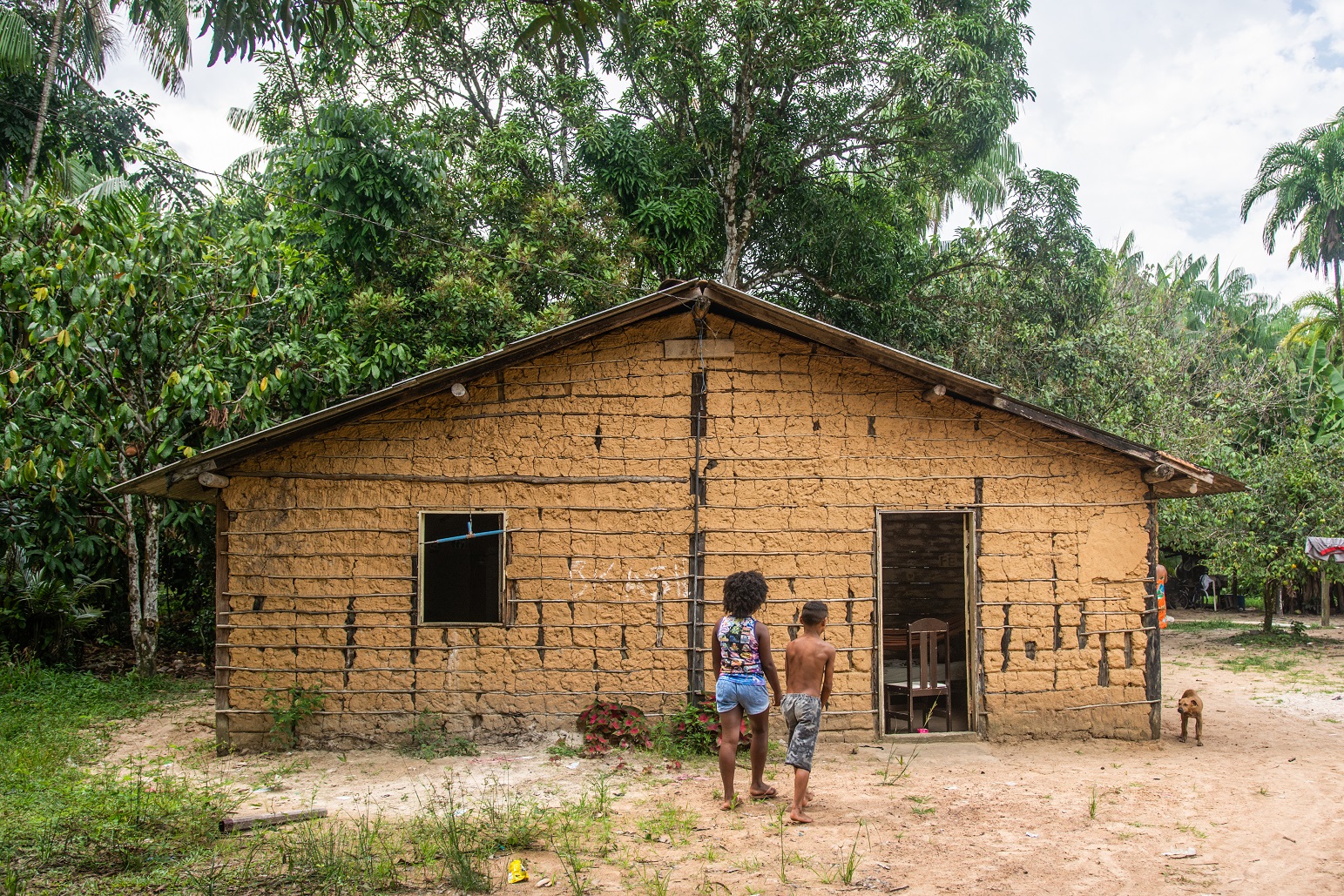
MOJU, PARÁ, Brazil— “We are not even getting access to the basic necessities,” says Raimundo Magno, the leader of the Africa quilombola community in Moju, Pará, his face grim with anguish. Magno’s complaint points to the abandonment felt in the quilombolas, communities of descendants of Africans brought to Brazil as enslaved laborers. The sense they’ve been deserted is brought about by the lack of help, by the absence of specific health policies, and by the scarcity of official statistics tabulating the number of COVID-19 cases.
After months of agony, entities and leaders are arguing in court for the state to recognize the historic vulnerability of the population, which the appearance of the new coronavirus in their territories has accentuated.
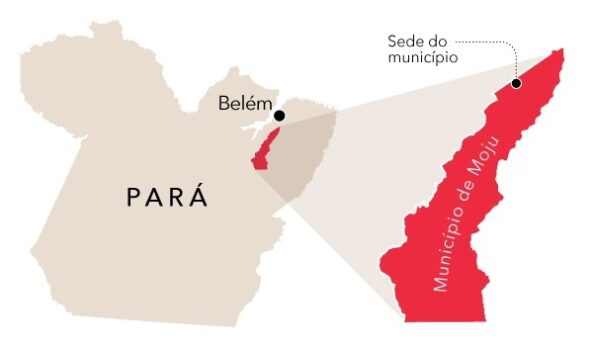
“There was no water, no food, no doctors, no testing, no treatment, no masks, no information, no anything,” according to Magno. He summarizes the general context of the quilombola communities confronting the threat brought by COVID-19. The ways in which these groups—which trace their roots and resistance back to the period of colonial slavery—survive are guided by their direct relation with nature, family agriculture, fishing, and the selling of surplus catches and crops. The need for isolation unbalanced the families’ income: the products of their labor were lost, as was the storage for future months of sustenance, since they could not plant.
Givânia da Silva, member of the National Board for the Coordination and Connection of Rural Black Quilombola Communities (CONAQ), explains that with the new dynamics imposed by the pandemic, many communities faced hunger, the loss of productivity, and the invasion of their territories. According to the organization’s data, there are about six million people living in quilombolas in Brazil, in approximately 5,792 localities.
“Our communities are often near large mining and agribusiness enterprises or near baths and beaches. During the pandemic, no one respected our isolation, and once again we had to fight to protect our territories,” Givânia asserts.
To guarantee the minimum of security and isolation, some communities called for the construction of improvised barriers, but many of these appeals were not successful, facing strong internal and external resistance from workers and businesspeople. Teams formed by community members worked around the clock to keep outsiders out or to try to convince relatives not to leave their houses for the cities, farmers’ markets, and survival jobs. If they could not convince them to stay home, they distributed masks, gloves, and alcohol, items obtained, in the majority of cases, from donations from organizations and partners.
“We had to really struggle to get anything from the state and, when it came, it did not cover even a fifth of what we asked for,” Magno explains. As a member of the State Coordination of Surviving Quilombo Community Associations (Malungu), he was at the front line of the struggle for the rights of the quilombola communities in Pará state.
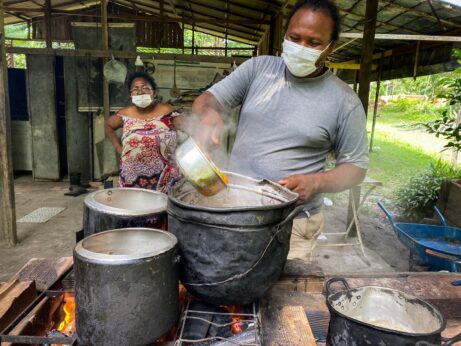
“We call this state racism, there is a purpose in the way they treat our people. They never bothered with us. There is a name for this, it’s called ‘necropolitics,’” Magno reveals. Necropolitics, according to the Black intellectual Achille Mbembe, expresses the power of the State to decide who lives and who dies in a society.
Without knowing if they are infected or not, people turn entire communities inside out to convalesce from fever, cough, and breathing difficulties. Without tests or help of any kind, they take care of themselves and their sick. The situation tends to get even more dramatic, considering the advance of new variants on the national pandemic scene and the delay in vaccinating the Brazilian people, added to the structural uncertainties of the public health network faced with the exponential growth of cases during the so-called “second wave.” In the communities, the best way to neutralize the damage caused by the pandemic was to return to plant medicine remedies and traditional wisdom.
The abandonment of quilombola populations is nothing new, what the pandemia did was worsen the already desperate situation in our territories. —Raimundo Magno, President of the Association of Quilombola Africa Dwellers
For Hilton Silva, professor in the anthropology department of the Federal University of Pará and member of the Brazilian Association of Collective Health (ABRASCO), the vulnerable situation of the majority of quilombola communities throughout the country is second only to that of the Indigenous villages. The parallel drawn by the professor is in relation to the sanitary conditions, to the lack of health assistance, and the alimentary vulnerability of the population. According to Silva, there is a certain number of people, among the quilombola population, who suffer from diseases like diabetes, tuberculosis, sickle cell anemia, and arterial hypertension, that can be related to environmental and genetic factors. These are diseases that, added to the risks of COVID-19, sound the alarm for specialists and leaders who are fighting for guarantees during the crisis caused by the pandemic.
“It is as if we have to continue to fight for the end of the slavery of our people, because when the State does not kill them, it lets them die,” Givânia says.
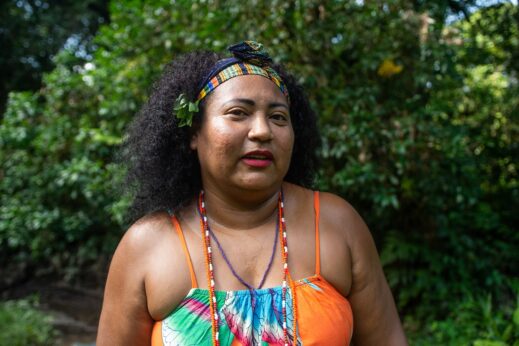
Lack of official data
There is no data about the quilombola population in the official statistics. The 2020 census, which was to be the first to include data about the remaining communities of quilombos spread across the nation, needed to be postponed because of the pandemic. This ended by influencing the order of priorities of the National Plan of Operationalization of the Vaccination against Covid-19, which did not count the quilombola population among the immunized groups in the three primary vaccination phases.
The justification offered by the Ministry of Health for the quilombolas not being in the primary immunization phases along with Indigenous people and riverbank-dwellers who were vaccinated in the first phase was the absence of data about the population—something that could have been rectified by the ministry with the support of the Brazilian Institute of Geography and Statistics (IBGE). According to the plan, quilombola vaccination is scheduled for the fourth phase of immunization, along with teachers and public safety professionals, but which still has no scheduled start date.
However, even with the scarcity of vaccine, some states intend to postpone immunizing quilombola communities, of which there are 516 in Pará, 142 in São Paulo state and, more recently, because of action taken by the Federal Public Ministry (MPF), Amapá with 73 communities.
The lack of data has also compromised the combat against the pandemic in the quilombola territories. There is no official data on the number of people contaminated and deceased as a consequence of COVID-19 in the territories. Because of this, leaders and partner organizations, like the Socio-Environmental Institute (ISA) and the Federal University of Western Pará (UFOPA), have begun to quantify disease tabulation in an autonomous manner, first on the national level and then on the regional. For this, they count on an information network they have established with base community associations, which supply daily information via telephone or WhatsApp (when there is internet), about the advance of the disease.
The ISA maintains an observatory in partnership with CONAQ, Quilombos Without Covid-19, which centralizes the national estimates about cases of the disease among the groups. The Sacaca nucleus of the UFOPA, partnering with Malungu, has made every effort to compute the number of cases in Pará, the state that has registered the highest number of quilombolas who have died of COVID-19. The data is gathered and transformed into a bulletin which appears daily on the telephones of the quilombola population of Pará. As of the middle of February, Brazil had registered 4,926 confirmed cases of the disease among quilombolas, and 205 deaths.
According to a Malungu survey, Pará state has a quilombola population of 6,000 people of which 37% are estimated to have been infected by COVID-19. Also, according to this survey, 2,238 cases of the virus have been confirmed in quilombolas and 2,175 are suspected, although none of them have had any medical treatment since the start of the pandemic. Pará was at the head of the quilombos’ COVID mortality list with 62.
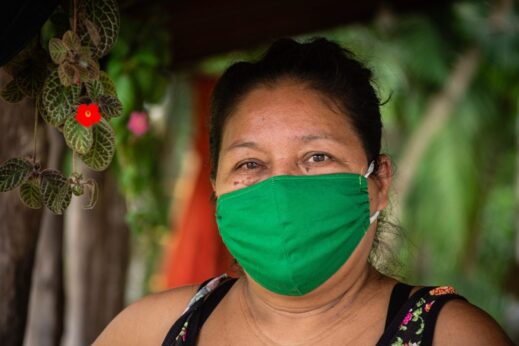
For the leaders, all data are estimates, not “final numbers,” explains Givânia da Silva. This is because difficulties of access, distance, and lack of communication all make contact with communities in various regions of the country difficult, especially when isolation is enforced.
Carlos Ribeiro, president of the Ivaporunduva quilombola community in Eldorado, southern São Paulo state, says that many people have fallen ill but no one can confirm how many are infected with the novel coronavirus because the 110 families who live in the quilombo have not been tested.
“The support we had was from non-governmental organizations (NGOs) and they came just once with boxes of food and hygiene kits,” Carlos recalls.
Collaborating on this article were Adriana Abreu and Sam Schramski. Translated for People’s World by Peter Lownds. The original publication can be seen here.


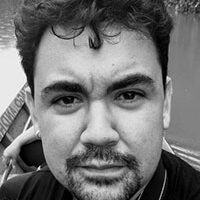

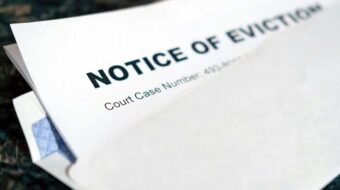
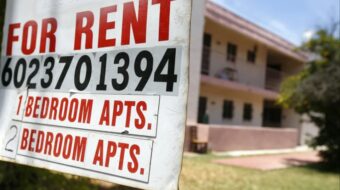






Comments